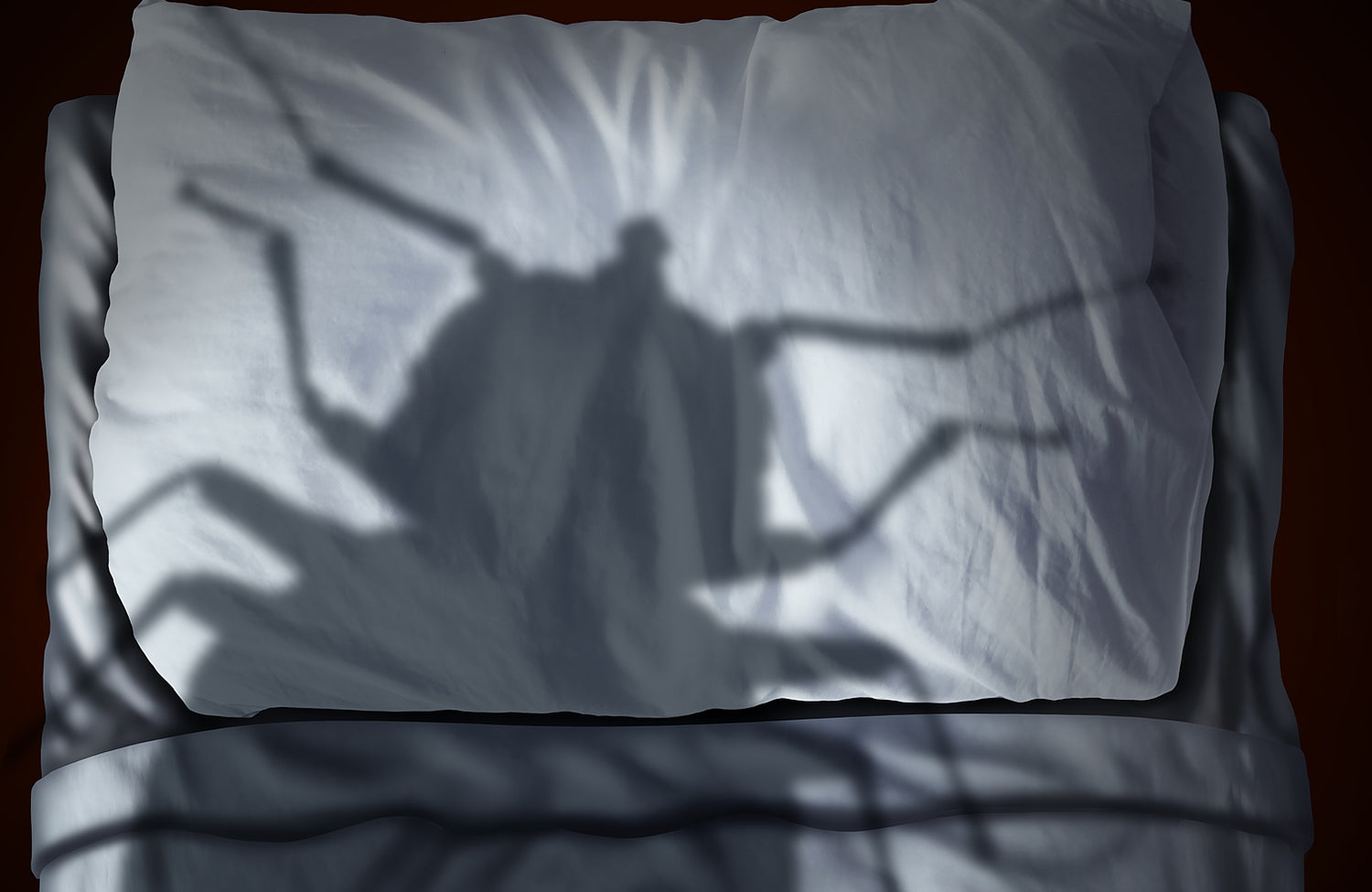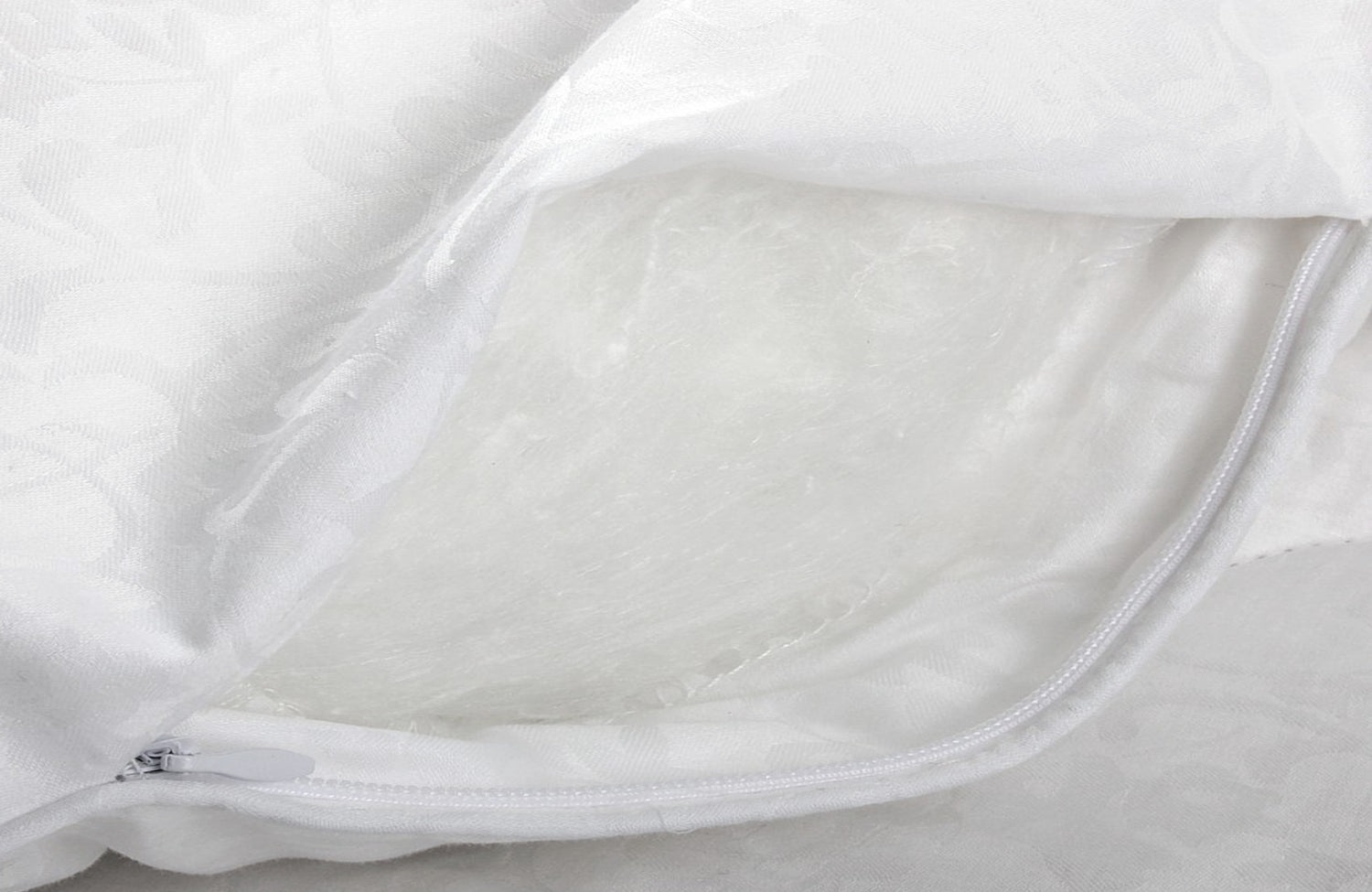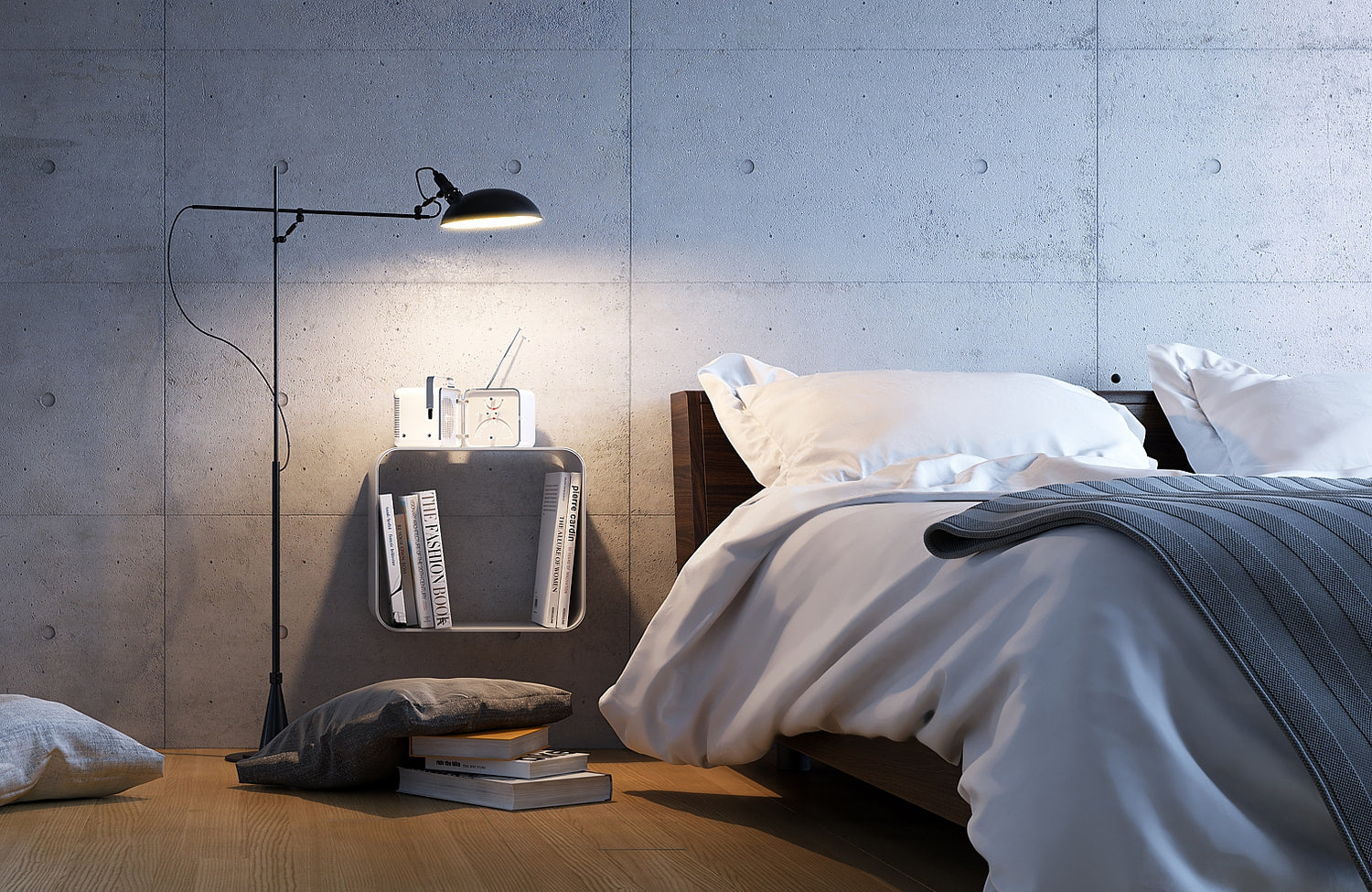
A blessing for allergy sufferers
Why dust mites have no chance with silk
Nasty creatures
Do you know this feeling? You wake up in the morning, your eyes
Swollen, blocked nose. Do you also suffer from frequent sneezing and itching?
These can all be symptoms of a dust mite allergy.
especially at night and in the morning, as the bed is not properly
measures are very allergenic.

the invisible roommates
What exactly are house dust mites?
House dust mites are tiny arachnids that are invisible to the naked eye and are found in almost every home.
What do house dust mites feed on?
House dust mites feed on our shed skin flakes.
What triggers the allergy?
Mite excrement contains allergenic components that can disperse in the air as fine dust, be inhaled, and thus trigger allergic reactions.

Yuck, yuck!
Unappetizing facts
Dust mites thrive at temperatures around 25 degrees Celsius and 70% humidity. Our down duvets offer an ideal home. The highest concentration of dust mites is found in pillows, where there is plenty of skin flakes for food, as well as plenty of warmth and moisture.
A pillow can easily contain up to 400,000 mites! And each of these mites produces up to 20 fecal pellets a day! Unappealing, isn't it?

The fiber makes it
Why don't mites like silk?
Silk is much less susceptible to dust mites than
other materials such as cotton. This is because silk fibers are denser and offer fewer cavities for mites to settle. Furthermore, silk naturally contains substances that are unfavorable to dust mites. Silk itself is hypoallergenic and does not trigger allergic reactions.
So if you are allergic and are looking for a textile fiber that offers you comfort and protection, silk is definitely a good choice!

This is what our customers say:
to our silk bed linen-
Anita M. from Wetzikon
"My nose, which was blocked every morning for years, is now clear. I probably didn't take my dust mite allergy seriously for too long."
-
Franz S. from Amriswil
"I read about mites everywhere. Something so disgusting can't happen to me with my silk bedding."
